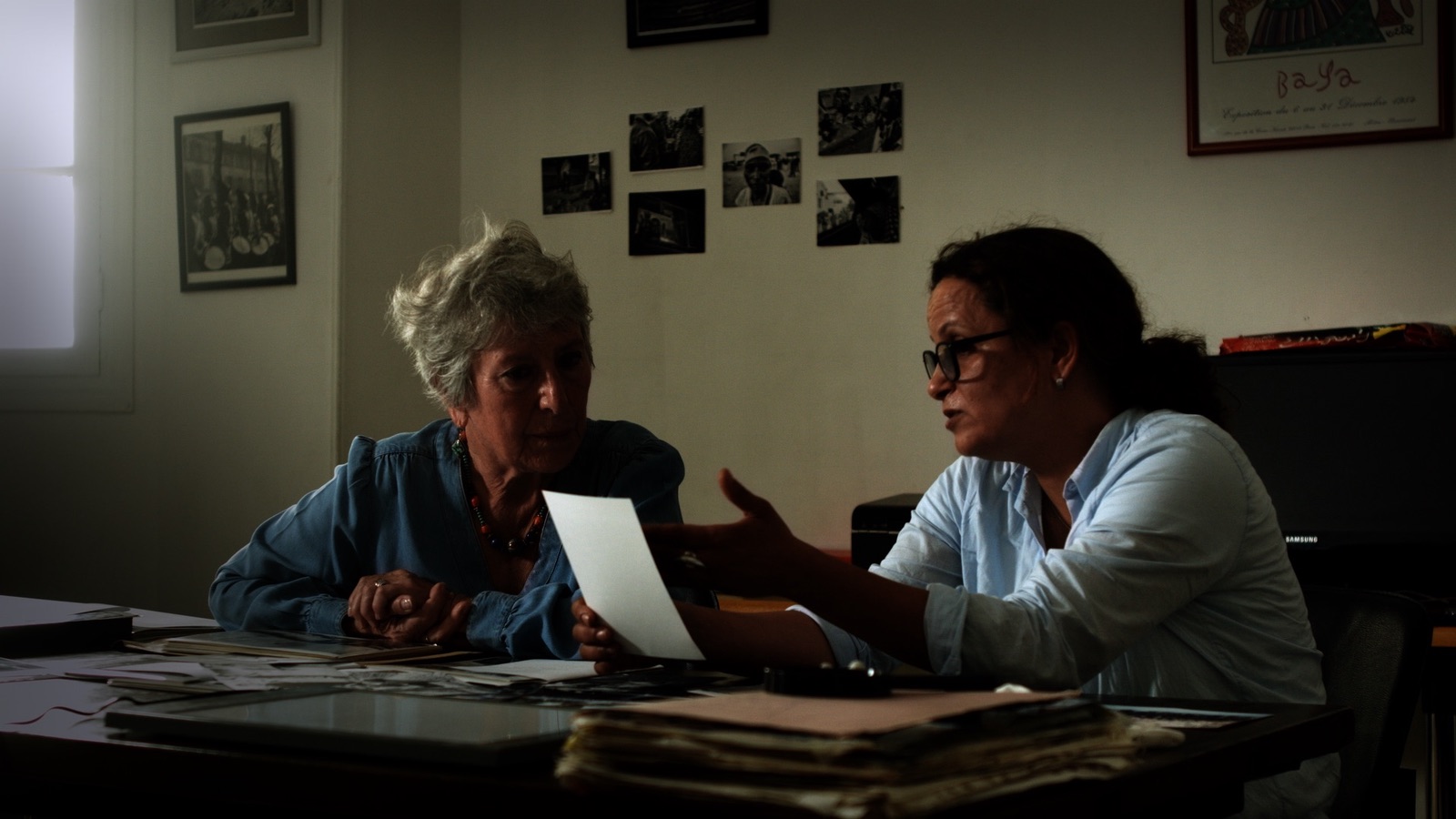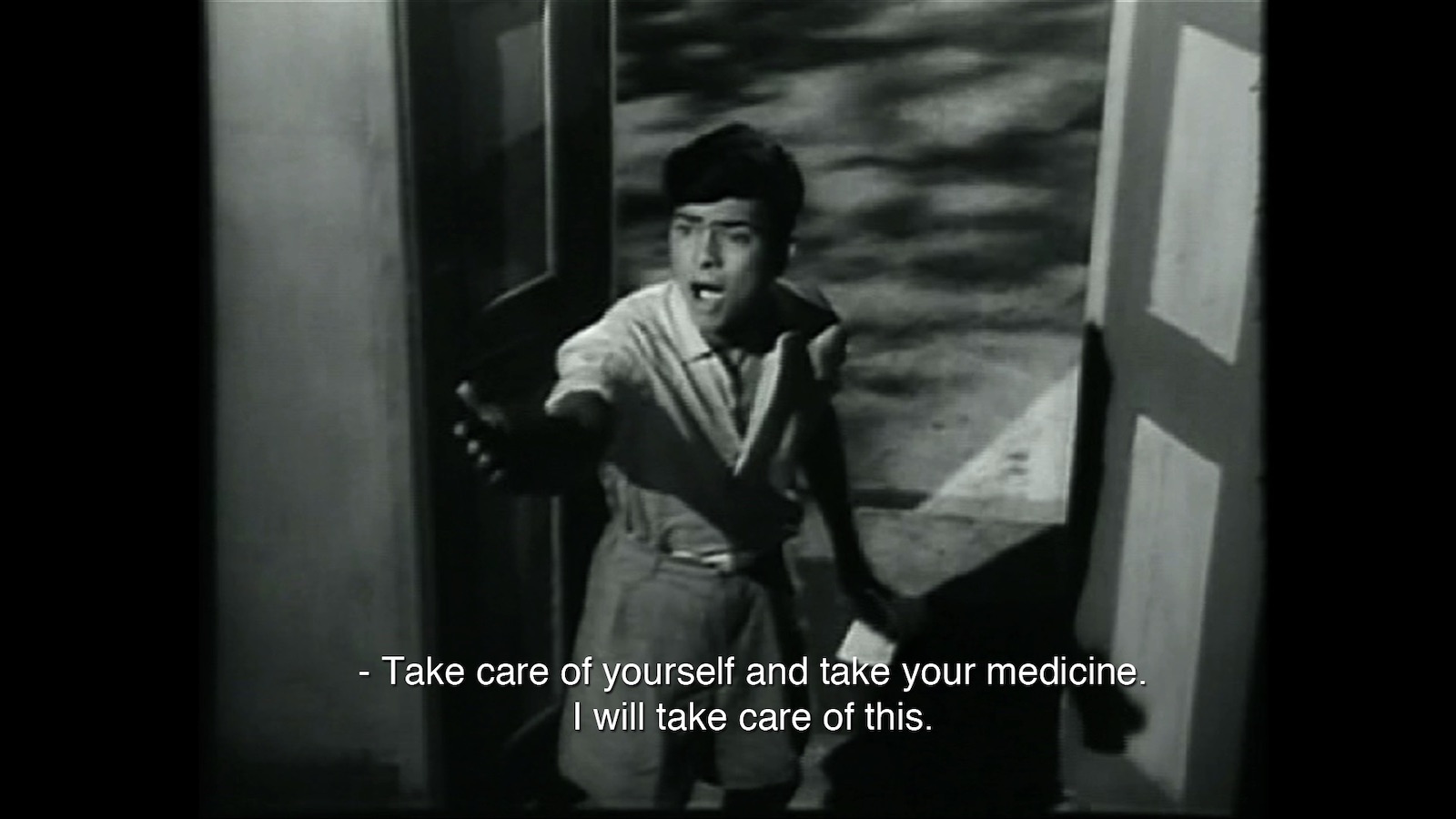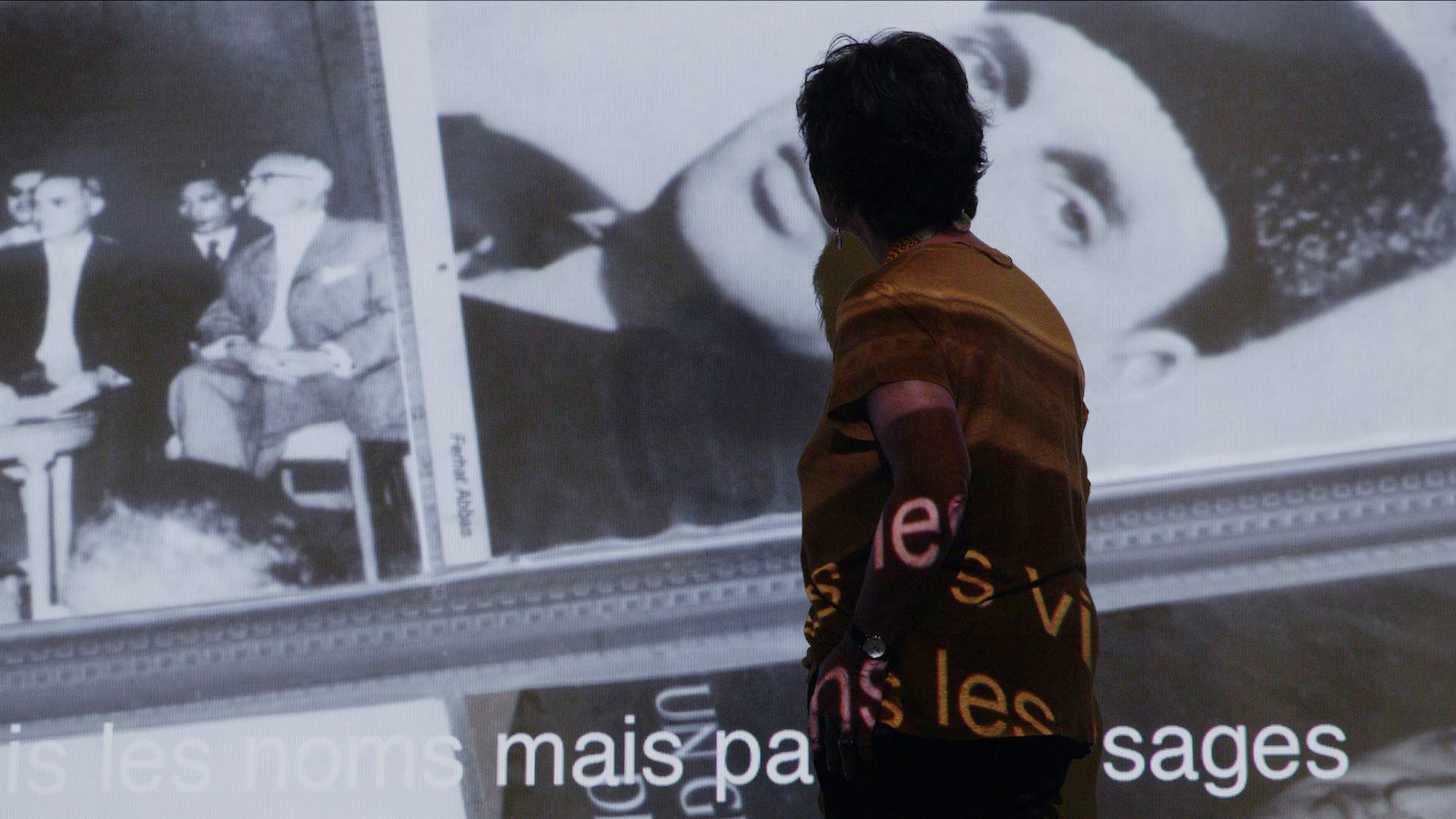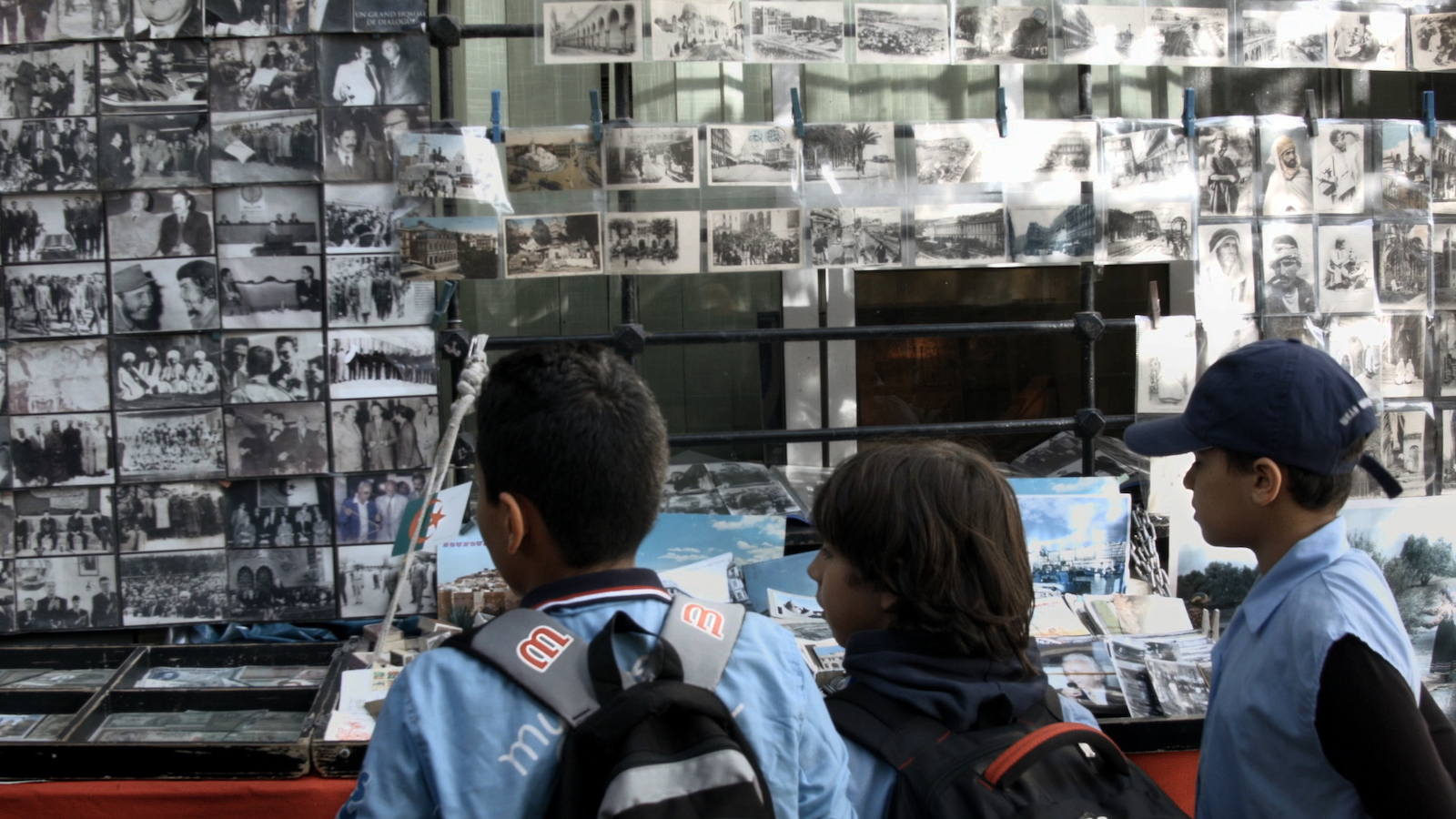COEUR À COEUR

Katia Kameli weaves stories that unravel a thread of symbols and cross-cultural references: sparks of memory that remain present. Her films and installations rekindle the past so that embers of memory do not become ash. Through her films that evoke visual poems of peoples’ stories, she offers glimpses of our own identity, where History joins the Personal, and through these lenses of film and photography, of archival footage and visual essays, testimonies of Algerian histories.
The title for her current show at Kunsthalle Muenster, ’She Rekindled the Vividness of the Past’ reflects this idea of personal histories that unfold before our eyes or in the shadows, of stories both lost and (re)found. The exhibition resonates ever more powerfully today with the current protests in Algeria. Katia’s work visualises the fire of freedom that crackles and soars.

Can you tell us more about the relationship between historical memory and literature in your work.
These links are always there: art as visual literature, the artist as a translator, the way we look at an artwork like a reader would a ‘visual’ text. my work is built on and grows from these readings. I explore the subjectivity of history and its texture, like something malleable that changes with the storyteller’s voice.
My work weaves these correspondences between History itself and the stories affecting us since childhood.

If your art had its equivalent as a literary genre or type of storytelling, which would it be and why?
Rather a set of texts: first of all poetry as a reflection, a ‘mirror’ and the creative spark it has to fire our imaginations -like a written painting that recreates signs and stimulates references, whichever they may be for different people. We feel a poem as much as we read or hear it.
It is a kind of personal enigma that is renewed each time we interpret it.
Also, I like the idea of a framework narrative, where several stories are intertwined, as in One Thousand and One Nights. The sequences filmed in my exhibition at the Kunsthalle in Munster are connected to each other as well, each subject brings on another: 3 chapters, 3 readings and re-readings, loop like a cycle. Texts within texts, that feed on one another and outline a non-linear narrative: the stories I recreate are like visual paths that go via intersections, never along a single route. And then there are essays and philosophy that I enjoy reading as part of my research.
For this exhibition I would mention Samir Toumir’s book Alger, le Cri which tells of the cracks underlying nostalgia like the lines of one’s hand. In Images (to follow), Marie-Jose Mondzain, analyses the idea of suspense, of pauses in filmed footage, while The woman without burial, by Assia Djebar, is an ode to Zoulikha, the forgotten heroine of the Algerian war.

In your exhibition ‘She Rekindled the Vividness of the Past’ at Kunsthalle Münster, language and historical identity are woven together in poetic ways… What does the act of sewing evoke to you in this work in particular?
In this exhibition, the second chapter incorporates sewing, personified by Marie-José Mondzain in filmed sequences. In the same way that sewing assembles different elements to (re)constitute an image, a film montage is the sewing of different visual and sound materials.
Sewing is gathering, recreating, repairing – a parallel to Algerian identity itself and its histories.

Space, air, fire, water, earth… which best defines your sense of Algerian identity?
No doubt a little of all those, but especially fire. The embers, the ashes, the flames, an energy that spreads, disseminates and captures what surrounds it … The fire resonates in me as a creative element that makes sparks, which destroys but at the same time is recreated, dance , in perpetual motion.
Fire drives our thirst for freedom and our feelings.

Combined with the air, fire persevere to grow and multiply. They, me, Algeria, all these women in my films, the feminine identity that is forged in action, displacement, independent, looks free.
The Revolution of the Smile, it is thus a ‘all fire all flame’ of dynamism, an intellectual and creative elan which crackles in us and becomes a light, a lighthouse.
We light the life of the past, the memory. A fire that goes out is equivalent to oblivion.

Video is integral to your work, both as a creative medium and social platform. How did you integrate it with photography in your exhibition at Kunsthalle Münster to express the ideal(s) underpinning the Revolution of Smiles?
Film to me is the moving image, a medium between two, a conversation between images and sounds. I am also interested in the notion of still images, of pauses and hazards in time
”Any life is in a certain way a film, at the same time an uninterrupted unfolding that goes from birth to death, but also a fragmented network of random paths.” [Marie-Jose Mondzain, Images (To : Follow)]

The ways in which you rewrite literary sources from the past resonate powerfully with today. Can you tell us more about this creative process for ‘Stream of Stories’, and the research you did for your exhibition at Kunsthalle Münster?
In Stream of Stories, I chose the Fables of La Fontaine to address this source text in plural: The Fables draw on Indian tales themselves translated into Persian, the Arabic version has 57 languages
… Stream of Stories sheds light on these multiple sources that intersect and come together to form an ocean.
The text is like a bridge, a meeting point in time between languages, eras and readers. My work follows a process of visual rewriting, in ‘flashbacks’ through the lens of what we perceive and interpret today when we read these texts.

In this exhibition curated by Merle Radtke, your work unfolds like a visual ‘novel’ in three parts, with a range of iconographic materials to guide the visitor. Can you share some insights on your work together ‘behind-the-scenes’ for this show, and why this title?
The title of this exhibition refers to the final song of chapter three, “She lit up the past”. Chapters 1 and 2 already existed, the third was specially designed for this exhibition.
I loved working with Merle on this exhibition’s scenography: We designed the exhibition as a mini cinema module that could set up a dialogue between 3 films across the large space of the Kunsthalle.
The public passes from one ‘island’ to another, the visit is done freely -every visitor following his or her own path.
What matters to us most is the feeling that each film provides in space, in the dark, and how to make sense of the media and techniques presented.

The press shots refer to the different strata of history, these stories are juxtaposed in transparencies. Photography becomes a sculpture, a structure built of negative and positive prints. The scenography itself is like a slide in three stages: the basement displays the pivotal piece, the film ‘Storyteller’ which was presented at the Marrakech Biennial.
The flag of Algeria integrates the notion of cross-referencing, with further layers of drawings, archival images, press items, wallpaper.

These iconographic materials are the reverse of the image, the reverse of the flag: those little stories that respond to History. It’s about questioning history and connecting it to something tangible and visual.
The notion of vestige, visual relics of our memories, to rekindle them and pave our futures.





Katia Kameli: She Rekindled the Vividness of the Past
7. September – 24. November 2019
Kunsthalle Münster | Hafenweg 28 | 48155 Münster
Opening hours: Tue-Fri 2-7pm | Sa+Su 12-6pm
Find out more about Katia Kameli on her website
Header Photo: Katia Kameli, Le Roman Algérien (Chapitre 3), 2019, HD Video, 46’ 59’’, Courtesy the artist
Author: Alexandra Etienne

